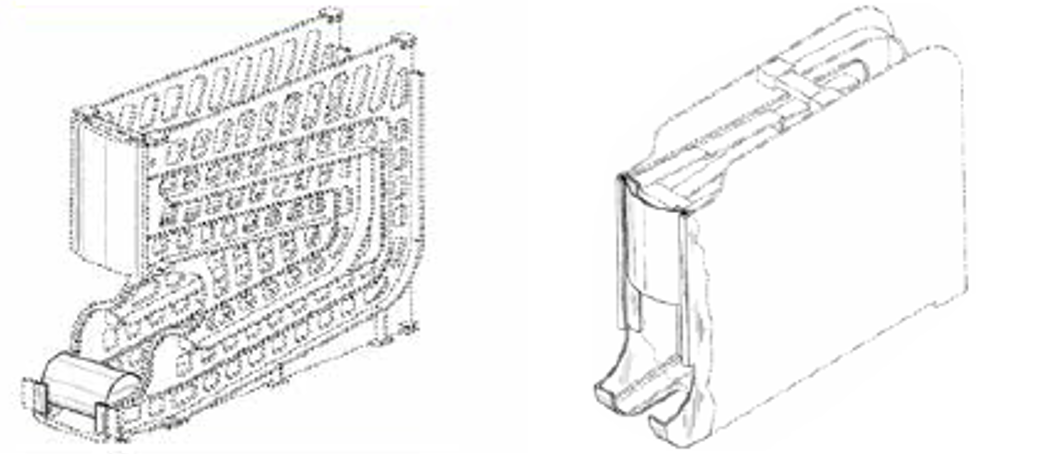Campbell Soup petitioned for inter partes review (IPR) of Gamon’s design patents D612,646 and D621,645. The Patent Trial and Appeal Board (PTAB) instituted the IPR and determined that Campbell Soup did not establish unpatentability because it had not set forth a prior art reference that was similar enough to the claimed design to constitute a proper primary reference, as required for a design patent obviousness inquiry. With respect to the Linz reference, the PTAB found that the Linz prior art was not a proper primary reference in part because the claimed design includes a can but Linz does not disclose a can, or any cylindrical object. The PTAB said that adding a hypothetical can to Linz in order to make Linz a primary reference is improper. The PTAB likewise found that the second reference Campbell Soup used, Samways, also did not qualify as a proper primary reference.
The design claimed in the ’646 patent and shown in Linz are reproduced below.
Campbell Soup appealed the final written decision to the Federal Circuit, which vacated and remanded the case to the PTAB. The court first set forth the relevant obviousness inquiry: “[i]n the design patent context, the ultimate inquiry under section 103 is whether the claimed design would have been obvious to a designer of ordinary skill who designs articles of the type involved.” The court then explained that the fact finder must first find a single reference to serve as the primary reference whose design characteristics are basically the same as the claimed design. The court stated that if a primary reference exists, related secondary references may be used to modify it.
With respect to Linz, the Federal Circuit found that substantial evidence does not support the PTAB’s finding that Linz is not a proper primary reference simply because it did not include the claimed can. The court stated that the parties do not dispute (1) that the claimed designs in the challenged patents and Linz’s design are for dispensing cans, (2) that a can would be used in the system, and (3) that Linz’s design is made to hold a cylindrical object. On those undisputed facts the court vacated the PTAB’s finding with respect to Linz and remanded the case. With respect to Samways, the Court affirmed the PTAB’s finding that Samways is not a proper primary reference.
Notably, Judge Newman dissented from the majority’s opinion on Linz, stating that the insertion of a can or cylindrical object into Linz in order to make it “basically the same” as the claimed design was improper. According to Judge Newman, “[o]nly after a primary reference is found for the design as a whole, is it appropriate to consider whether the reference design may be modified with other features, selected to match the patented design.”
This article appeared in the Federal Circuit Appeals From The PTAB: Summaries of Key 2019 Decisions report. To view our graphs on Data and Trends: AIA PTAB Appeals to the Federal Circuit, please click here.

Receive insights from the most respected practitioners of IP law, straight to your inbox.
Subscribe for Updates
